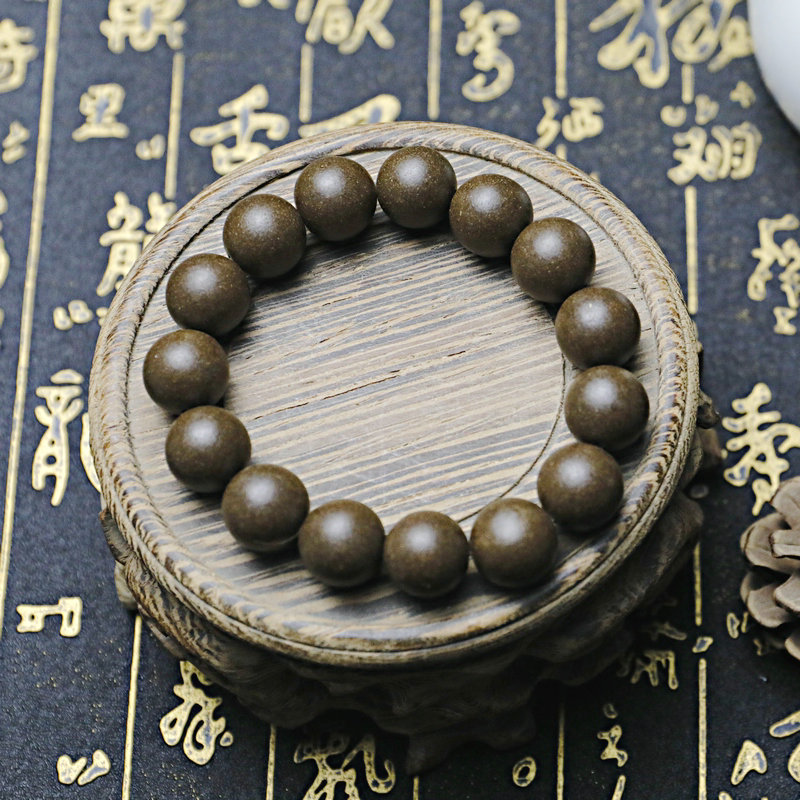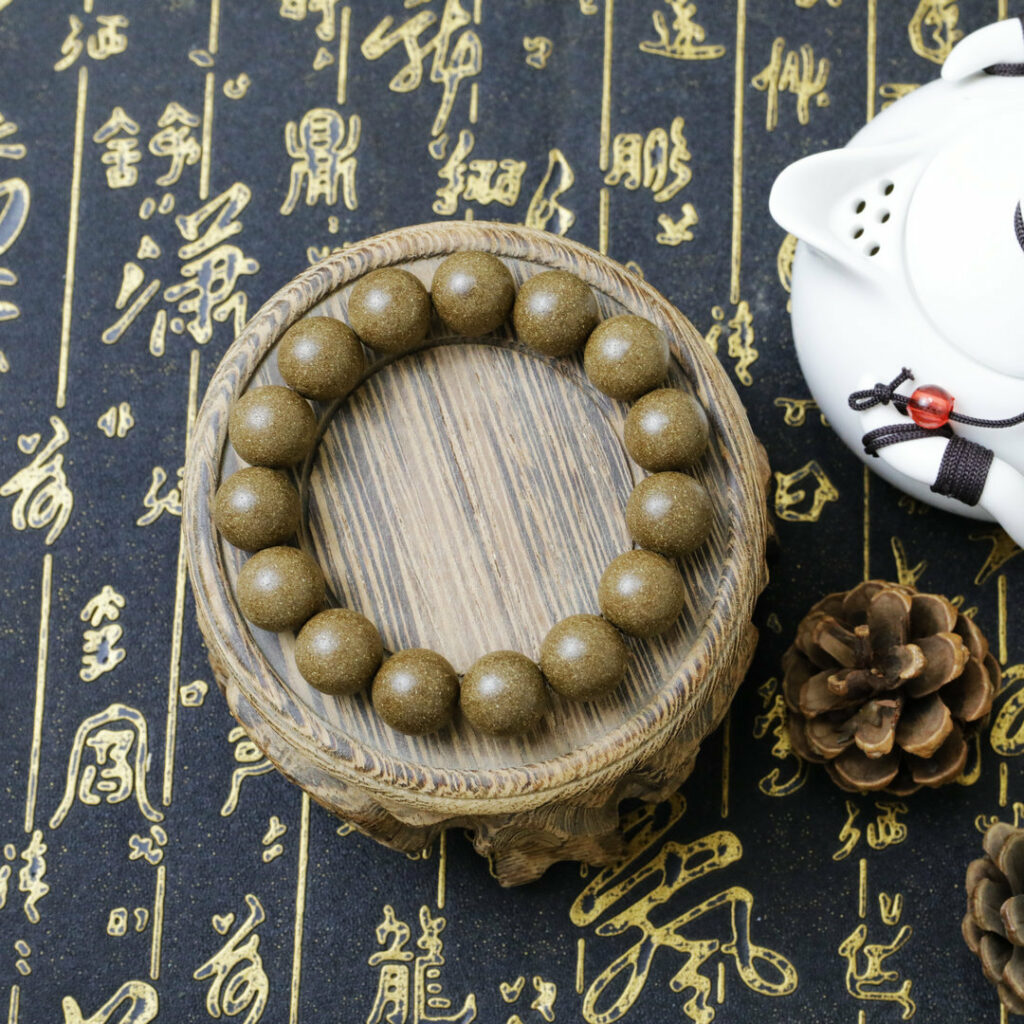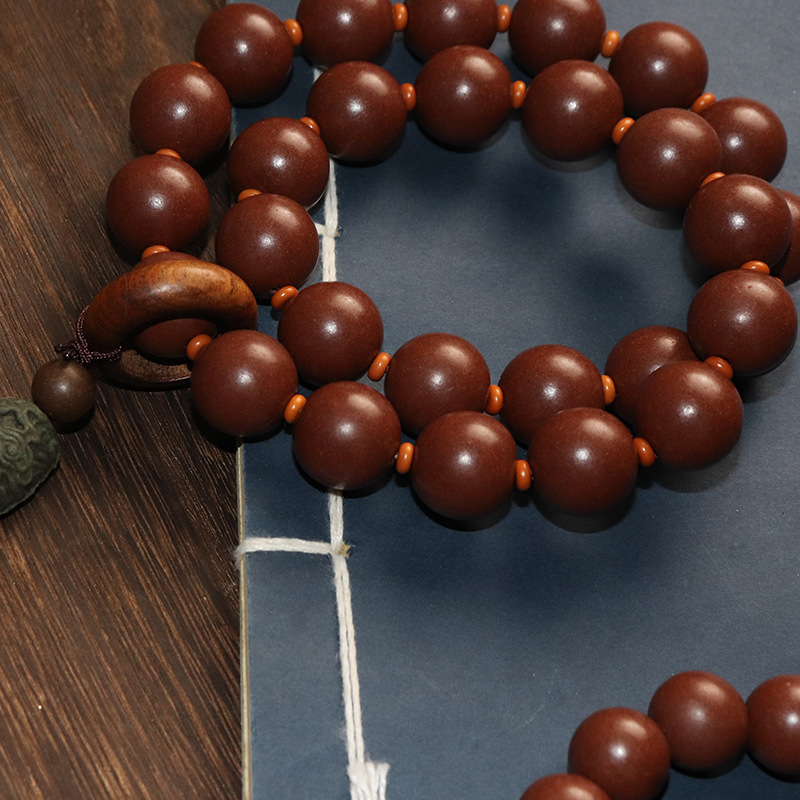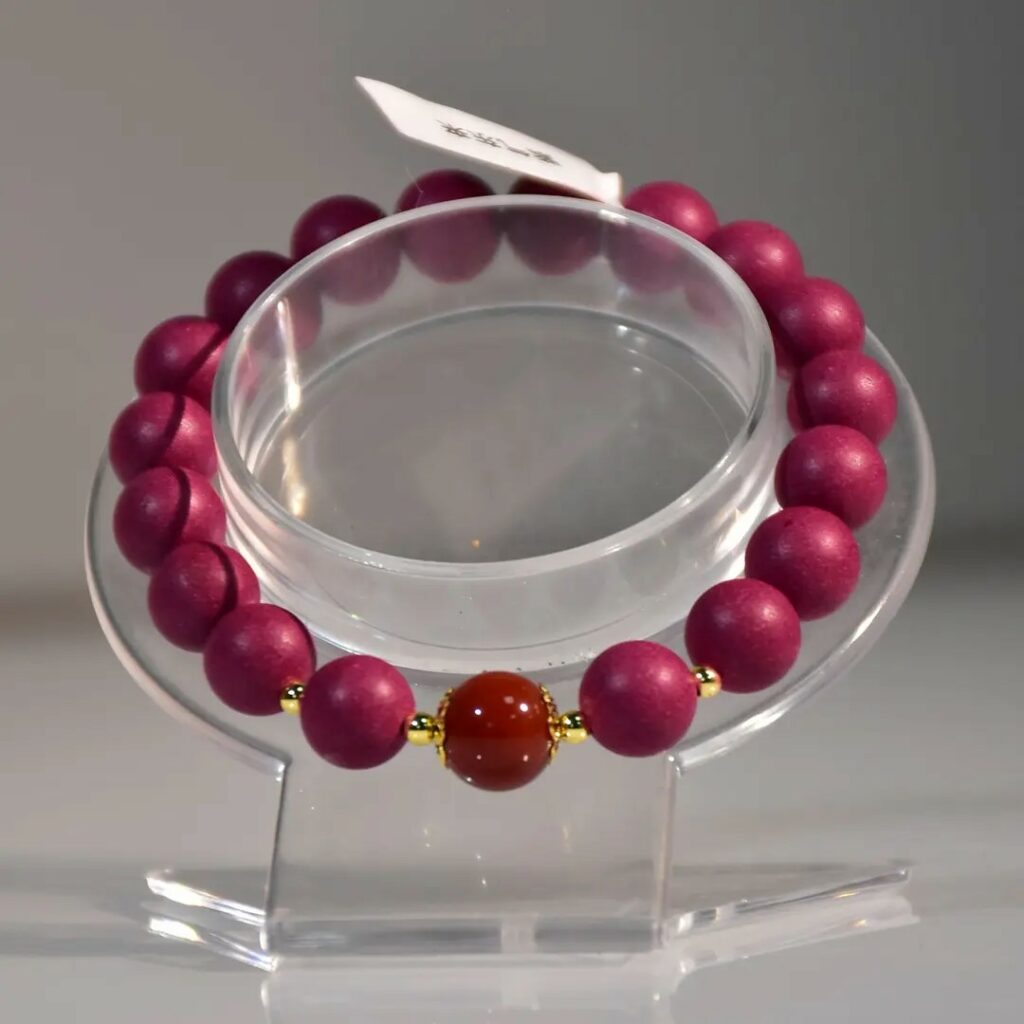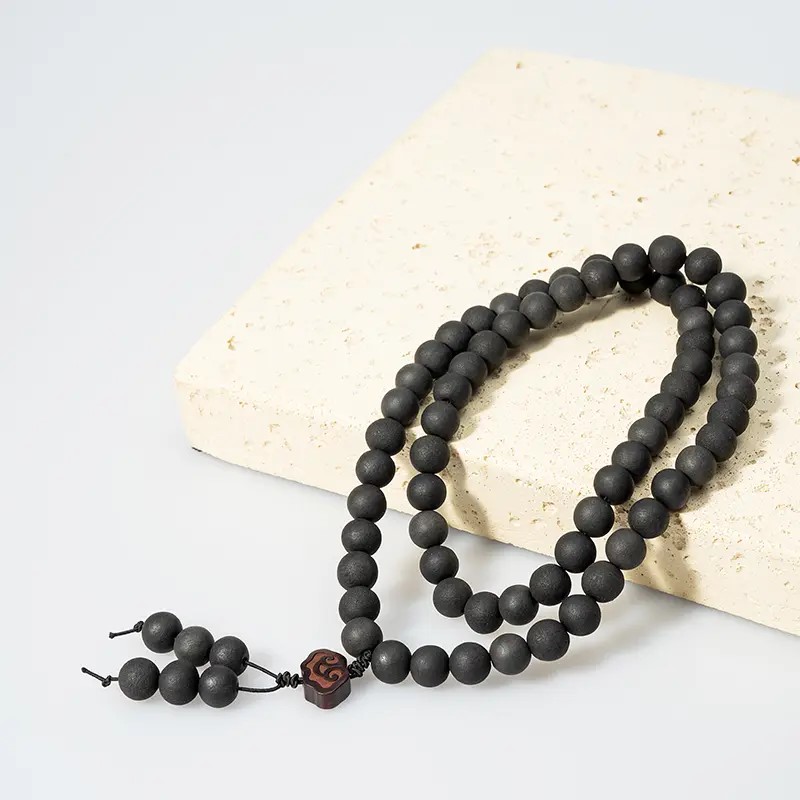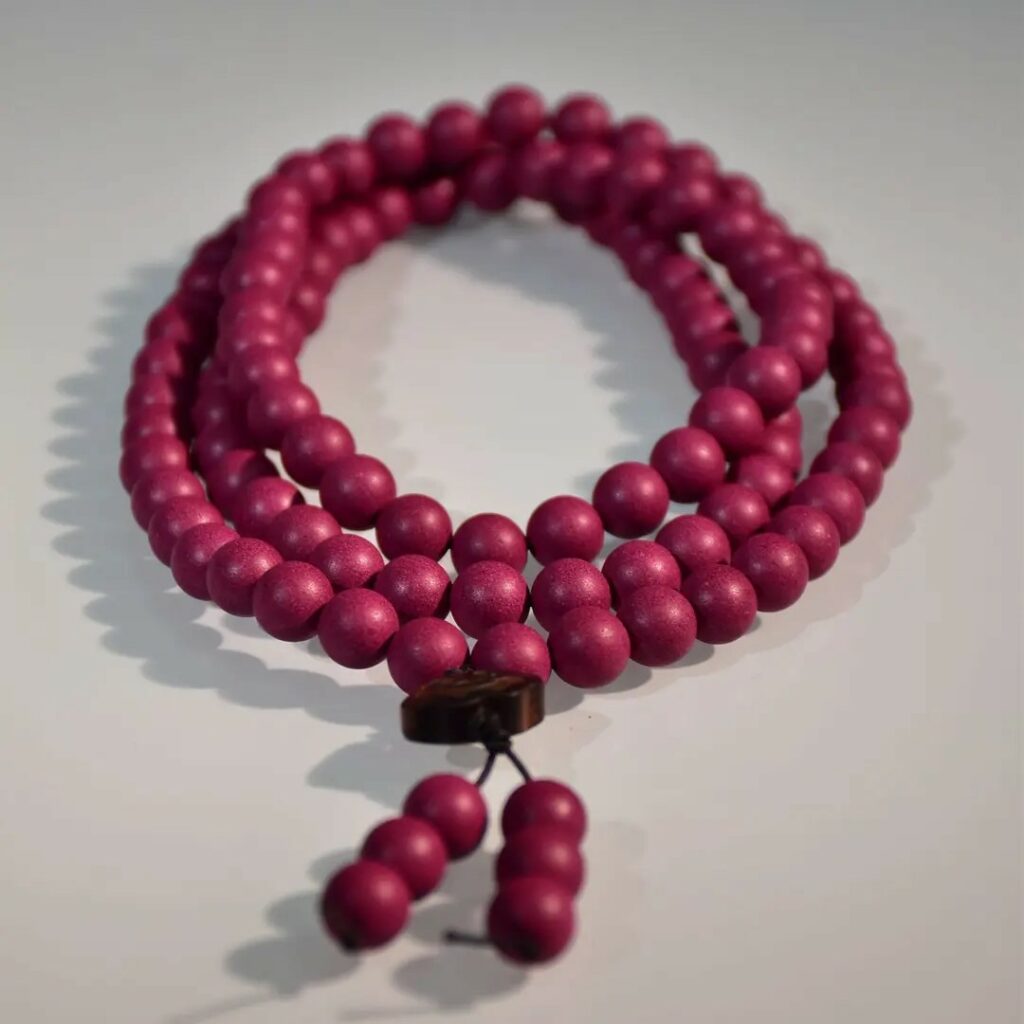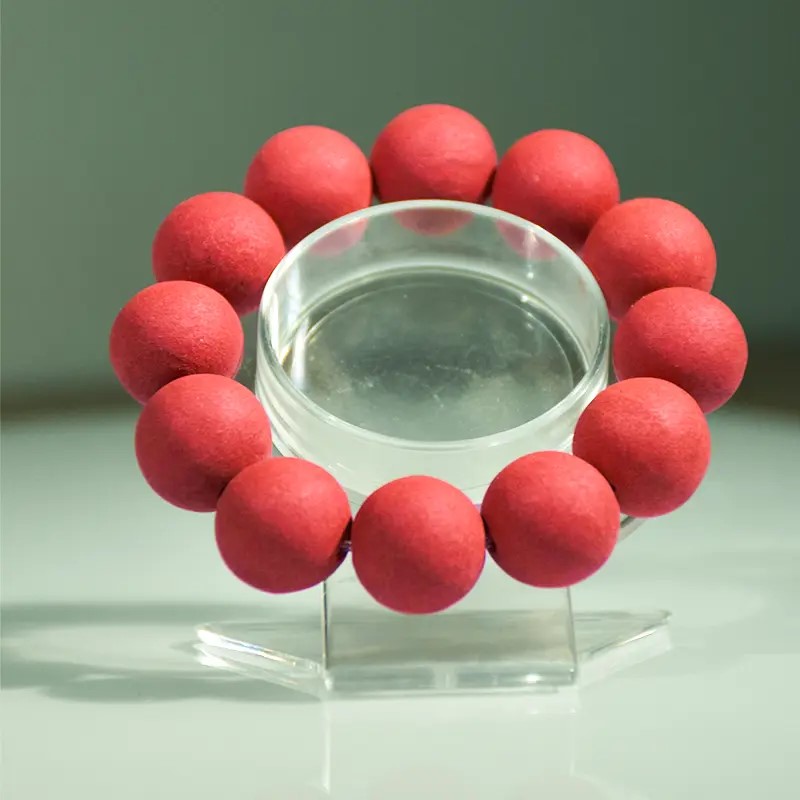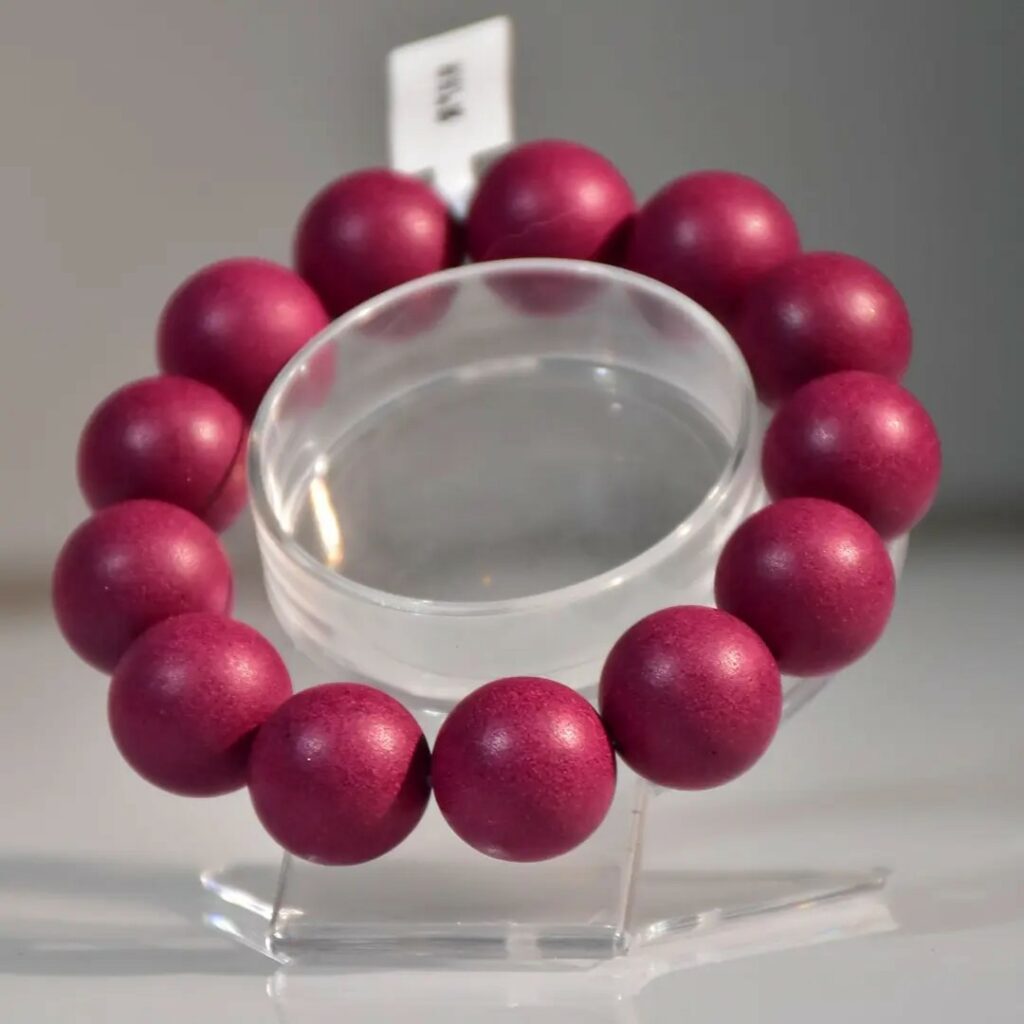Incense beads, or Chinese aroma incense beads , are far more than simple ornaments. These meticulously crafted spheres, born from the fusion of powdered precious woods, resins, herbs, and binding agents, represent a unique intersection of ancient Chinese fragrance culture, artistry, and contemplative practice. They emit a subtle, evolving fragrance and develop a beautiful patina over time. However, their inherent organic composition makes them remarkably sensitive to environmental factors, particularly water and oils. Understanding this sensitivity is paramount to preserving their beauty, fragrance, and integrity. This article delves deeply into the crucial question of water exposure and explores the refined techniques of “panwan” , the art of playing with and polishing Chinese aroma incense beads.
Part 1: Chinese aroma incense beads and Water – A Relationship of Avoidance and Care
The unequivocal answer to “Can Chinese aroma incense beads touch water?” is: Minimal and controlled exposure only, with immediate mitigation required. Deliberate or prolonged immersion is highly detrimental.
Here’s a scientific and practical breakdown of why water is the adversary of Chinese aroma incense beads:
- Structural Compromise:
- Hygroscopic Nature: The core materials (sandalwood, agarwood, cypress, etc.) and binders are naturally hygroscopic, meaning they absorb moisture. Water absorption causes the wood particles to swell.
- Drying Damage: As the bead subsequently dries, the swollen particles contract. This repeated swelling and contraction (even from minor exposure) creates micro-stresses within the bead’s matrix. Over time, this leads to:
- Cracking: Visible fissures, often starting small but potentially widening, compromising structural integrity.
- Warping: Loss of spherical shape.
- Surface Degradation: A rough, pitted, or chalky appearance replacing the desired smoothness.
- Binder Breakdown: Many traditional and modern binders (natural gums, plant-based adhesives) are water-soluble or water-sensitive. Water exposure weakens the binder’s hold, causing the bead to become crumbly or even disintegrate.
- Fragrance Alteration and Loss:
- Dilution and Leaching: Water acts as a solvent. Direct contact can physically wash away the volatile aromatic compounds (VOCs) residing on the bead’s surface and near it.
- Chemical Changes: Water exposure can accelerate oxidation or hydrolysis of delicate aromatic molecules, altering the scent profile. Desirable top notes (often lighter, fresher compounds) are most vulnerable.
- “Sealing” Effect: As mentioned in your prompt, water (and especially the oils in sweat) can temporarily or permanently clog the microscopic pores on the bead’s surface. This traps the fragrance inside, drastically reducing its diffusion into the air. The bead might feel “dead” scent-wise until thoroughly dried and cleaned – if recovery is even possible.
- Aesthetic Damage:
- Water Stains: Uneven drying or minerals in water can leave unsightly white spots or streaks on the bead’s surface.
- Loss of Sheen: Water exposure strips away nascent oils and patina, leaving the surface looking dull and lifeless.
- Mold Risk: If a damp Chinese aroma incense beads is stored without proper airflow, it creates a perfect environment for mold growth, leading to discoloration, unpleasant odors, and permanent damage.
Managing Accidental Exposure:
Despite best efforts, occasional light splashes happen. The protocol is critical:
- Immediate Action: Do not panic, but act swiftly.
- Gentle Blotting: Use a clean, soft, absorbent paper towel or lint-free cloth. Gently blot the affected area. Do not rub, as this can grind water deeper or damage the surface.
- Thorough Drying: Place the bead in a well-ventilated area, away from direct sunlight (which can cause rapid, uneven drying and cracking) and heat sources (radiators, hairdryers). Room temperature airflow is ideal. Allow it to dry completely for at least 24-48 hours. Rotate it occasionally.
- Silica Gel (Optional but Recommended): Placing the drying bead in a container with silica gel packets can significantly speed up moisture removal safely.
- Post-Drying Care: Once completely dry, you may need to gently wipe it with a dry soft cloth to remove any residual bloom or dust accumulated during drying. Resume normal panwan routines cautiously.
Absolute Avoidance Scenarios:
Vigilance is required in these high-risk environments:
- Bathing/Showering: Steam and direct water spray are pervasive.
- Swimming/Pools/Spas: Chlorine, salt, and other chemicals are extremely corrosive.
- Washing Dishes/Hands: High likelihood of splashes and soap exposure.
- Heavy Rain/Water Sports: Remove Chinese aroma incense beads bracelets or necklaces beforehand.
- Intense Exercise/Saunas: Profuse sweating creates a damaging micro-environment against the skin.
- Applying Lotions/Perfumes/Oils: These can penetrate the bead similarly to sweat.
Part 2: The Art of Panwan (handling and playing) – Cultivating Beauty and Patina
Panwan is the mindful practice of handling and polishing Chinese aroma incense beads to encourage the development of a smooth, lustrous patina ( baojiang) while enhancing the fragrance release over time. Given the vulnerability to oils and sweat, this art requires discipline and specific techniques.
Core Principles of Safe and Effective Panwan:
- Clean Hands are Mandatory (But Often Not Enough):
- Always wash and thoroughly dry hands before handling. Remove oils, dirt, and lotion residues.
- The Glove Imperative: This is the gold standard for serious panwan, especially in the initial stages or for high-value beads. Use clean, soft, white cotton gloves (undyed). Gloves:
- Create a perfectly smooth surface for friction polishing.
- Absorb any minimal oils/sweat from your hands before they reach the bead.
- Prevent direct skin contact, eliminating the risk of sweat and sebum transfer.
- Result in a clearer, more vibrant patina compared to bare-hand polishing.
- Limit Bare-Hand Contact Duration:
- If you choose to polish without gloves, be extremely disciplined.
- Keep sessions short (e.g., 10-20 minutes).
- Stop immediately if your hands feel even slightly warm or moist. This is the precursor to sweat.
- Never polish when stressed, anxious, or in warm/humid conditions that promote sweating.
- Consider bare-hand contact more for brief appreciation or mindful holding rather than active polishing sessions.
- The Technique: Mindful Friction
- Gentle Pressure: Use light to moderate pressure. Aggressive rubbing generates excessive heat and risks damaging the surface or heating binders.
- Consistent Motion: Roll the bead slowly and evenly between your fingers (gloved or clean), or rotate it gently within the palm of one hand. Cover all surfaces uniformly.
- Rhythm and Patience: Panwan is meditative, not rushed. Consistent, gentle friction over weeks and months is what builds the deep patina. Aim for regularity (e.g., daily short sessions) rather than infrequent marathons.
- Focus: Treat it as a mindfulness exercise, focusing on the texture, the subtle scent, and the motion itself.
- Rest is Crucial:
- Chinese aroma incense beads need time to breathe and stabilize. After a panwan session (especially bare-handed), let the bead rest exposed to clean air for several hours or overnight before storing it. This allows any minimal absorbed moisture/oils to dissipate and the patina to set.
- Do not immediately seal a freshly polished bead in an airtight container.
- Storage: Sanctuary Between Sessions
- Store Chinese aroma incense beads in a dedicated, breathable pouch (soft cotton or silk is ideal) when not being worn or played with.
- Place this pouch inside a wooden box (cedar or camphor wood boxes are traditional and beneficial) or a dedicated drawer/cabinet.
- Critical: The storage environment must be cool, dry, and well-ventilated. Avoid humid bathrooms, damp basements, or areas near heat sources. Include silica gel packets if humidity is a concern.
- Separate Storage: Store Chinese aroma incense beads away from other strong-smelling items (other perfumes, soaps, spices) to prevent scent contamination.
The Rewards: Understanding Patina (Baojiang)
The ultimate goal of panwan is the development of baojiang. This isn’t just surface shine; it’s a metamorphosis:
- Physical Transformation: Microscopic leveling and polishing through friction create an increasingly smooth surface that reflects light evenly, creating a deep, soft luster (like satin or aged jade), distinct from a plastic-like gloss.
- Chemical Transformation: Natural oxidation processes occur at the surface. Minute traces of oils (ideally only from the bead’s own resins, not external sources) and polished particles interact and harden very gradually over time, forming a thin, protective layer.
- Enhanced Fragrance: A well-developed patina allows for a more controlled and sustained release of fragrance molecules, often perceived as richer and more complex than the initial scent of a new bead. The patina protects the inner matrix while allowing optimal diffusion.
- Spiritual Connection: The time, care, and mindfulness invested in panwan create a tangible link between the owner and the bead. The resulting patina is a visual and tactile record of that dedicated interaction.
Conclusion: Respect, Mindfulness, and Lasting Beauty
Chinese aroma incense beads are exquisite but delicate treasures. Treating them with reverence means understanding their fundamental vulnerability to water and oils. Vigilant avoidance of immersion, steam, and sweat is non-negotiable. The art of panwan, particularly when practiced diligently with clean cotton gloves, limited bare-hand contact, proper rest, and careful storage, is the pathway to unlocking their full potential. It transforms the bead from a static object into a dynamic, evolving artifact. The resulting patina is not merely aesthetic; it’s a testament to patience, care, and a harmonious interaction between the natural world and mindful human attention. By mastering the balance of avoidance and mindful engagement, you ensure your Chinese aroma incense beads retains its structural integrity, releases its captivating fragrance for years to come, and develops a patina that whispers of the time and dedication invested in its journey.
